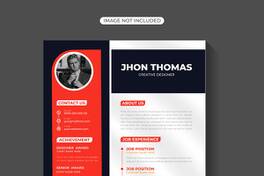
Introduction to Europass
The importance of Europass within Europe
Europass is an initiative launched by the European Union to help citizens present their skills and qualifications in a standardised way across Europe. This system is crucial in supporting labour mobility, educational exchange and professional development of individuals within the EU. With Europass, employers and educational institutions can easily understand and compare the qualifications and skills of candidates from different European countries, facilitating the recruitment process and admission to educational programmes.
Overview of Europass documents and tools
Europass comprises several key documents and tools that help individuals to present their professional and educational trajectory:
- Europass CV: A standardised CV that allows candidates to present their skills, experience and qualifications in a way that is understood across Europe.
- Europass Language Passport: A document that assesses and describes an individual's language skills based on the Common European Framework of Reference for Languages.
- Europass Mobility: Records all forms of training or work experience undertaken in another country, providing transparency and recognition of transnational experience.
- Certificate Supplement Document: Provides detailed information on professional qualifications and skills acquired through training or courses.
- Diploma Supplement Document: Provides additional information on higher education, including courses, specialisations, theses, internships, etc.
Europass offers online tools and platforms for creating and updating these documents, as well as for career management and learning planning. These tools are aimed at facilitating the job or training application process and supporting professional mobility and development within Europe.
Benefits
The Europass CV provides a number of advantages, especially for individuals seeking employment or training opportunities in Europe:
- Standardised format: the Europass CV has a standardised format recognised in all EU Member States. This makes it easier for employers and educational institutions to understand and assess your qualifications and experience.
- Easy to use and complete: The Europass platform offers online tools to help you create and update your CV in an easy and convenient way.
- Multilingual: A Europass CV can be created and presented in any of the official languages of the European Union, which is particularly useful if you are applying for positions in different European countries.
- Improves visibility: As Europass is widely recognised and used across Europe, using Europass CV can increase your visibility among employers and educational institutions.
- Free: Using the Europass tools and templates is completely free, making it an accessible resource for anyone looking to boost their employment or educational prospects.
- Supports labour mobility: Europass CV makes it easier to apply for jobs or training in different countries, supporting professional mobility and educational exchanges within Europe.
- Integration with other Europass tools: the Europass CV can be linked to other Europass documents and tools, such as the Language Passport or Certificate and Diploma Supplement Documents, to provide a more complete picture of your skills and qualifications.
All in all, the Europass CV is a valuable tool that can greatly facilitate the job or education search process in Europe by providing a clear, structured and easily understandable way of presenting your skills and experience.
Structure and content of the Europass CV
How should you structure your CV and what sections should you include?
The Europass CV follows a standardised format that makes it easier for employers and educational institutions in different European countries to understand and assess your skills and qualifications. Here are the main sections to include in your Europass CV:
- Personal information: Include your name, address, phone number, email address and, if applicable, personal website or social media accounts.
- Work experience: Describes your professional history, listing all relevant positions you have held, dates of employment, name of employer and main responsibilities and achievements.
- Education and training: Provides information about your academic education and further training, including the names of educational institutions, dates of study, specialisations and qualifications or diplomas obtained.
- Personal skills and competences: Divided into several subsections, such as:
- Language skills: Describes your language competences and proficiency levels, often structured according to the Common European Framework of Reference for Languages.
- Communication and organisational skills: Describes your soft skills related to communication, organisation and project management.
- Technical skills: Includes information on your proficiency in specific technologies, software or technical tools.
- Additional Skills: May include skills such as car driving, first aid, and others that are relevant to the desired position.
- Personal Interests/Hobbies (Optional): This section is optional and may include your interests or hobbies that may demonstrate your personal qualities or additional skills.
- References (optional): If you feel it is appropriate, you may include contacts of previous employers or professors who can provide a reference for you.
Tips for displaying personal information, education, experience and skills
- Clarity and conceptuality: Be clear in the description of each section. Use bulleted lists for ease of reading and understanding.
- Relevance: Emphasize those aspects of your professional and educational history that are most relevant to the position for which you are applying.
- Active Action Words: Use strong action verbs to describe your responsibilities and accomplishments in the work experience.
- Specific Examples and Results: Provide specific examples of your accomplishments and, where possible, include quantitative results to demonstrate your effectiveness.
- Timeliness: Make sure your CV is up to date by including the latest information about your work history and skills.
See more on how to write a CV for a job
By following these tips and structuring your Europass CV appropriately, you will be able to present your professional history in a way that is easy to understand and attractive to employers and educational institutions.
Examples and templates
The Europass CV examples and templates provided on the official Europass website are valuable resources that can greatly facilitate the process of creating a professional and impressive CV. Here's how these resources can help:
- Structured approach: Europass CV templates provide a pre-defined structure that helps candidates to organise their information in a clear and logical way. This ensures that all important sections, such as personal information, education and training, work experience, skills and language competences, are included and well organised.
- Professional layout: templates are designed with a professional layout that makes your CV easy to read and visually appealing. Proper layout is essential to creating a positive first impression.
- Examples of content: Europass provides examples of CVs that illustrate how to articulate your skills and experience in a way that is directly relevant to your desired position or educational programme. These examples can give you ideas on how to present your achievements, personal skills and qualifications in an impactful way.
- Adaptability: Europass CV templates are flexible enough to allow customisation. Although the structure is predefined, you can add, delete or rearrange sections to reflect your unique career and educational path.
- Multilingual: Europass offers templates and examples in different languages, which is particularly useful if you are applying for positions or training in different European countries. This allows you to create your CV in the language that is most appropriate for your specific case.
Using templates and examples from the Europass website can greatly speed up the CV creation process and help you create a document that looks professional and is tailored to your individual needs and objectives.
Where can I create my Europass CV
You can create your Europass CV online via the official Europass website. Here are the steps to follow:
- Visit the Europass website: go to the official Europass website.
- Register or login. If not, you may need to register. Registration is free and usually only requires basic information and an email address.
- Create your Europass CV: Once you have logged into your account, select the option to create a new Europass CV. The platform offers an interactive online tool that guides you through the different sections of your CV, such as personal information, work experience, education and training, skills, etc.
- Fill in your information: enter your personal information, work experience, educational background, skills and other relevant information. You can save and continue later if you can't finish in one sitting.
- Choose your language: You can create your CV in any of the official languages of the European Union.
- Review and complete: Once you have completed all the information, review your CV and make any necessary corrections or additions.
- Save and download: Once you are satisfied with the information on your CV, you can save it to your profile and/or download it in your preferred format, such as PDF.
Useful:
Online CV filling in English
Online CV filling in Bulgarian
Example of a completed CV
Creating a Europass CV is a simple process that helps you present your skills and qualifications in a standardised and professional way. The website also provides instructions and tips for completing your CV, which can be very useful, especially if you are creating a Europass CV for the first time.







